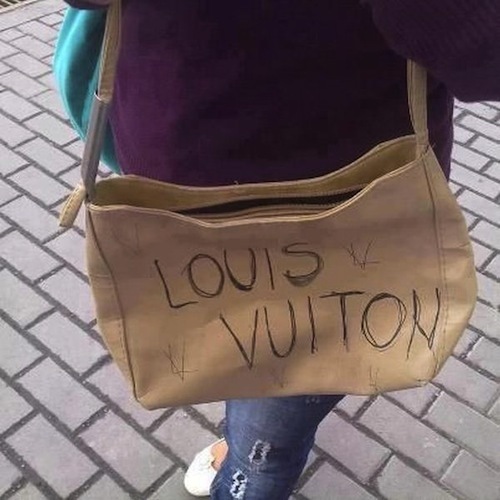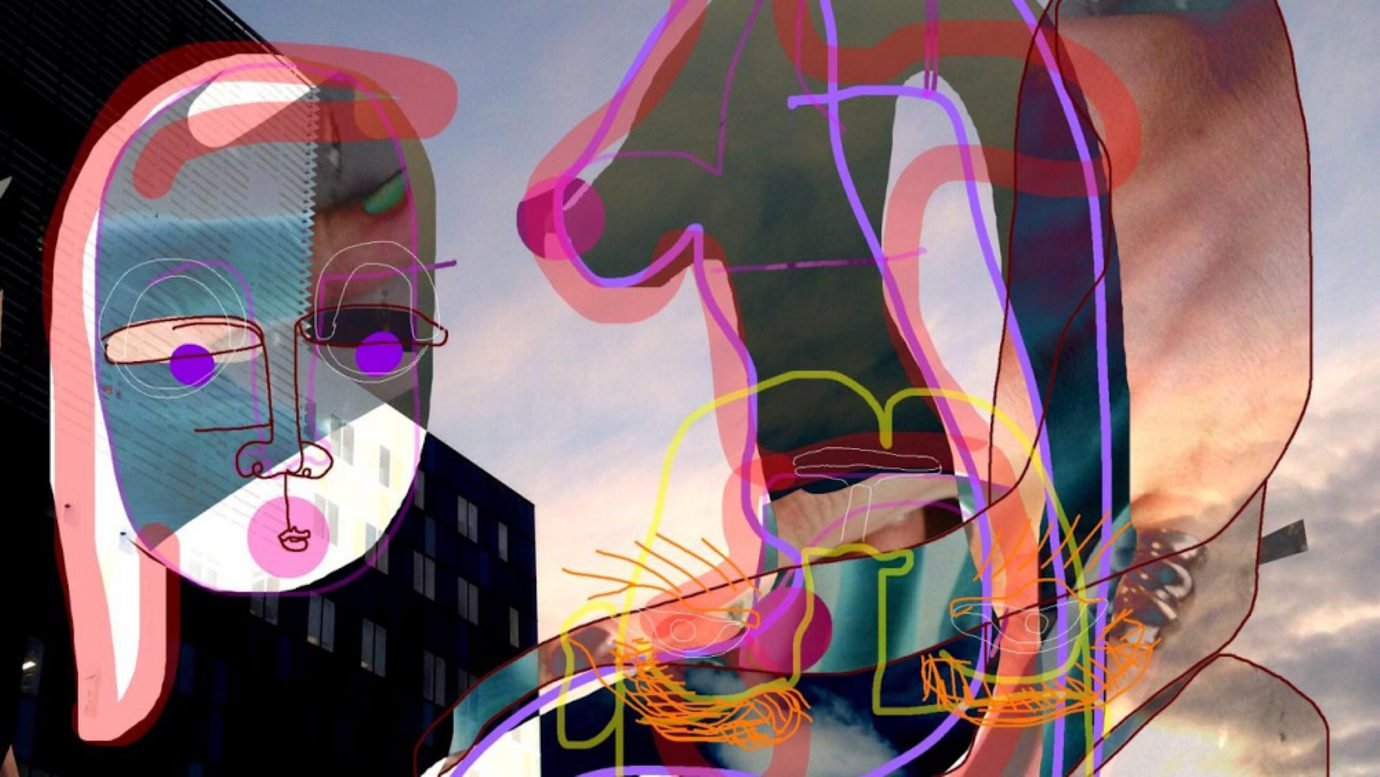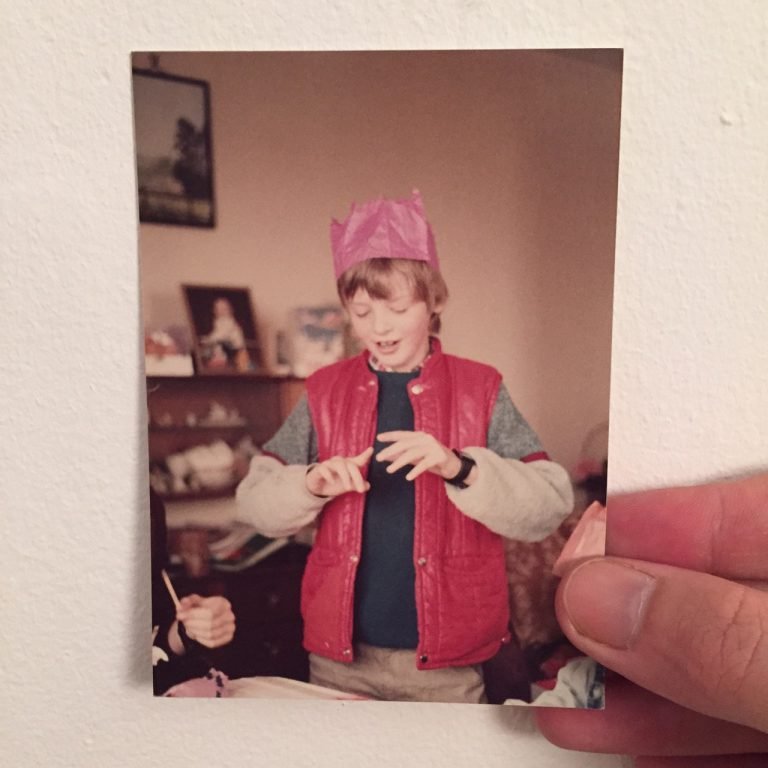What @givecredit_ tries to do, which other anonymous accounts seem to neglect, is go through a rigorous verification process. Of course, an account like @stressedstylist doesn’t require much verification because it is based on personal experience and doesn’t implicate or accuse specific brands of misdemeanours. With @givecredit_, posts have the capacity to affect brands’ sales and therefore workers’ livelihoods, so the team are careful to do their due diligence. “Verification requires both time and knowledge,” explains Andreea. “Especially culturally, we should pay special attention when presenting a specific situation to the people.” In some cases, this process takes mere hours but in others, it takes months: “We have collaborations with partners all over the world. It is much easier for us to connect with native traditional-textile experts this way. We are undergoing the process of becoming official, through a collaborative partnership which we have started with Donna Bramhall of Haute Culture Textile Tours. This allows us to verify accusations with the communities which keep and maintain this essential type of knowledge, generation by generation.”
While @givecredit_ focuses on cultural appropriation, anonymous accounts like @shitmodelmgmt and @diet_prada have gained an audience for their handling of sexual assault allegations and calling out ‘ppl knocking each other off lol’ respectively. All face similar challenges with verification. While they allow people to speak openly about commonplace issues they face without fear of endangering their careers, their anonymity has arguably played a significant role in broadening the reach of a sensationalist call-out culture, often at the expense of a thorough, methodical approach to researching and discussing key issues. The anonymity becomes a little more sinister when the account is public and, instead of just posting drunken selfies, it posts call-outs. In some cases, this leads to products being pulled or customers boycotting brands, but others simply ignore the accusations. While followers have largely supported their claims about major brands ripping off start-up talent, Diet Prada have faced some backlash when critiquing young, independent designers. Last year, the pair called out Richard Quinn for supposed similarities to Demna Gvasalia’s designs for Balenciaga, only to be scolded by followers who reminded them that Quinn’s exploration of head-to-toe florals predated Gvasalia’s. It raised questions over the account’s responsibility to support young talent, which is often their justification for posting larger brands’ copies. It’s one thing to adopt a cloak of anonymity to protect your own career, but quite another thing when you do it to tear down someone else’s.
“Someone had to do this. I know it’s crazy that a meme account ended up being the person to do it, but it was just time. What would you do if you had thousands of horrific stories? Would you just go to bed at night knowing you had a way to help?”
At the end of February 2018, just a few months after the Harvey Weinstein story broke, Instagram meme account @shitmodelmgmt started posting a ‘blacklist’ of alleged abusers within the fashion industry. Soon, there were more than 450 names on the list, and those with more than three allegations levelled against them were marked with an asterisk. By the beginning of March 2018, the blacklist had been removed from the @shitmodelmgmt account, with the account holder telling followers, “I’m getting too many death threats and threats to ‘find my family’ and ‘make me sorry I did this’. I’m still not sorry for protecting models from future negative experiences. Someone had to do this. I know it’s crazy that a meme account ended up being the person to do it, but it was just time. What would you do if you had thousands of horrific stories? Would you just go to bed at night knowing you had a way to help?” With such high profile additions as designer Tom Ford and photographer Bruce Weber, it is understandable that the person behind the account would wish to remain anonymous. They may be problematic, but the people on the list are also influential, and speaking out publicly could result in the account holder being blacklisted themselves, albeit from work not because of an assault claim. The former model told Paper magazine, “I’m so glad that I didn’t [reveal my identity] because I would be scared.” Whilst the account itself is anonymous, the person behind it was wary to accept tips or allegations from other anonymous accounts. When someone messaged her from an account with no posts or followers and no screenshots of the alleged inappropriate messages, she chose not to share the allegation.
Diet Prada is no longer anonymous – it’s founders were unceremoniously exposed as Tony Liu and Lindsey Schuyler – but the watchdog account still functions with an air of backstage whispers more akin to Gossip Girl than true journalism. Its early anonymity seems to have granted it a free pass to bitch and gossip, and it encourages similar bullying behaviour from its audience, who regularly send in tips. The ‘news’ shared on Diet Prada isn’t just office gossip spilt at the water fountain, it often comes with receipts: Instagram comments otherwise buried in a flurry of responses, illicit conversations and direct messages with the names covered up are all screenshotted and shared. The issue is that the accused rarely get a chance to respond to allegations before the damage to their reputation is done and the pair have been known to play favourites. Last year, Dolce & Gabbana were forced to cancel a show in Shanghai after Diet Prada drew attention to racist comments made by designer Stefano Gabbana, the New York Times reported that “the internet’s troublesome commentators” were now “too influential to ignore.” Many people suspect that Diet Ignorant, an account dedicated to calling out Diet Prada’s call-outs, is run by scorned designer Stefano Gabbana. On the other hand, brands like Prada and Gucci, who have invited Liu and Schuyler to narrate their shows before, have enjoyed relative impunity despite accusations of racism.
These anonymous accounts exist in a time when consumers pledge allegiance to fashion brands based on their social and political credentials. People brandishing logo t-shirts want to know that they aren’t guilty-by-association. So the allegations Diet Prada throw out have very real ramifications. Encouraging boycotts of brands they disagree with generally doesn’t damage the people implicated but the people working below them, the people who depend on that brand to make ends meet. The legacy of Diet Prada’s anonymity, combined with the fact that they lay no claim to rigorous journalism or research, seems to be that it relieves them of accountability.
The Business of Fashion recently referred to Diet Prada as “fashion’s most exciting new media brand.” The article went on to suggest that, in order to grow, Diet Prada might consider a more journalistic approach, “giving subjects the opportunity to comment, and more rigorously fact-checking tips and corroborating accusations.” The idea that an anonymous entity can play judge to a digital jury is a complicated one. Whether the public participation that platforms like Diet Prada encourage is a good thing is yet to be seen. Of course, in cases where there are sexual abuse accusations involved or racist slurs, there is an element of public interest. It took Diet Prada and @shitmodelmgmt calling out abusers within the industry for mainstream publications like Vogue to finally sever ties with the accused photographers.


















